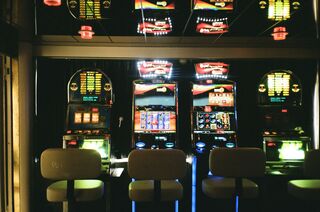Adolescence
Why Do Teenagers Take More Risks?
Research suggests differences in decision-making, learning, social influence.
Posted September 30, 2022 Reviewed by Tyler Woods
Key points
- Teenagers are the age group most affected by risky, dangerous behaviours.
- Adolescents are more willing to gamble in experiments than adults and have increased activity in key brain areas while taking risks.
- Heightened sensitivity to social influence can also mean adolescents take more risks.
- Being willing to take risks and sensitive to benefits more than costs can result in positive behaviours as well as negative ones.
Taking risks is a typical part of growing up. On the path to becoming responsible adults, teenagers might engage in increased alcohol intake, substance use, and risky sexual behaviours. But why is this period of life a time of risky and impulsive behaviour? The reasons behind different behaviours are highly complex and involve weighing potential benefits, or “rewards”—such as positive experiences—with the costs or risks of doing them. Many choices also happen in a social context, introducing extra factors to consider, like the benefits of social approval or the risk of embarrassment.
Research suggests that how we weigh up risks and rewards, learn about them, and get influenced by other people, all change profoundly from childhood to adulthood. There are also widespread changes in the brain throughout adolescence, particularly in the brain areas linked to decision-making and learning. Understanding why, when, and how behavioural and neural changes may result in risk-taking is essential to support teenagers with their physical and mental health.
Making choices when the consequences are uncertain
To measure people’s willingness to take risks, experiments in psychology and neuroscience often ask people to choose between two options in a lottery or gamble. One is a “safe” option, offering a small, guaranteed prize. The other offers a chance to win a bigger prize but also a chance of getting nothing. Studies comparing teenagers and adults in these experiments show evidence that adolescents are more willing to gamble.
There is an important distinction between two different types of uncertainty, known as "risk" and "ambiguity." What psychologists describe as risky outcomes have a known probability, like a lottery with 100 tickets creating a 1 percent chance of winning. Ambiguity refers to outcomes with unknown probabilities, for example, if you don’t know how many lottery tickets have been bought. Studies using brain scanning both in adults and adolescents support the distinction between risk and ambiguity, as different parts of the brain are involved in these different types of decision.

An interesting observation is that what we call “risk-taking” in the real world might be more accurately characterized by ambiguity, as the chance of negative outcomes is unknown. For example, it’s impossible to know your exact chance of injury or death when deciding whether to drive after drinking.
Teenagers who chose to take more gambles in experiments despite not even knowing the chance of winning big or losing everything have been found to be more likely to report taking drugs or drinking and driving. Some studies have found teenagers are only as risky as adults when the probabilities are known, but are more tolerant to ambiguity, and so more likely to accept those unknown gambles. These findings suggest understanding how teenagers estimate the chance of positive and negative outcomes when they are ambiguous could be vital to addressing dangerous choices. For example, if teenagers underestimate the chance of harm from substance abuse, they might be more likely to use drugs.
Weighing up the risks and benefits
Another explanation for teenagers’ willingness to take more gambles is that they are particularly sensitive to the benefits or rewards available. This could make the balance between costs and benefits tip towards choosing the gamble due to the chance to get a big reward.
One experiment showed that adolescents, compared to adults, had higher activity in a part of the brain called the ventral striatum when accepting risky gambles. Another study showed activity in the same brain area during risk-taking experiments predicted teenagers’ future binge drinking. Research has shown that the ventral striatum region is also vital for learning from the consequences of our actions to make better decisions in the future.
Learning from rewards and punishments
Adults can learn from both reward and punishment. If an action leads to a positive outcome, we are more likely to repeat it, whereas if it leads to a negative outcome, we are less likely to do it again. Studies suggest that learning from punishment improves across adolescence, with early adolescents worse at learning from punishment than older ones. This means if a young person makes a choice that has negative consequences, they may still choose it again in future.
As well as learning from what happened in the past, we also take into account what we can learn for the future. An exciting new area of research is examining how people choose between exploring new options to see whether they are better than current ones. For example, whether to leave one job and search for a better alternative. This is likely to be vital for the transition towards independence and establishing new social connections and career choices during adolescence. Research found teenagers were more willing than adults to explore new things, which led to better overall outcomes for teenagers.

The influence of peers on teenagers’ choices
Adolescents may place an especially high value on what others think. One experiment measured how much physical effort people were willing to exert to obtain feedback from a peer. Results showed teenagers were more motivated than adults to know what other people thought of them, even when it was negative. When the risk of peer rejection must be weighed up against other risks, adolescents’ sensitivity to social outcomes could result in dangerous behaviours, like drug use. However, sensitivity to peer influence could also promote positive behaviours, like helping other people.
In summary, teenagers might be more likely to take risks because of higher tolerance to uncertainty, sensitivity to potential punishments, and the importance of social influence. These factors can promote dangerous behaviours during adolescence but also positive ones, so understanding them in more detail is vital to keep teenagers safe and help them thrive.
References
Barkley-Levenson, E., & Galván, A. (2014). Neural representation of expected value in the adolescent brain. Proceedings of the National Academy of Sciences, 111(4), 1646–1651. https://doi.org/10.1073/pnas.1319762111
Blakemore, S.-J. (2018). Avoiding Social Risk in Adolescence. Current Directions in Psychological Science, 27(2), 116–122. https://doi.org/10.1177/0963721417738144
Blankenstein, N. E., Crone, E. A., van den Bos, W., & van Duijvenvoorde, A. C. K. (2016). Dealing With Uncertainty: Testing Risk- and Ambiguity-Attitude Across Adolescence. Developmental Neuropsychology, 41(1–2), 77–92. https://doi.org/10.1080/87565641.2016.1158265
Blankenstein, N. E., Huettel, S. A., & Li, R. (2021). Resolving ambiguity: Broadening the consideration of risky decision making over adolescent development. Developmental Review, 62, 100987. https://doi.org/10.1016/j.dr.2021.100987
Blankenstein, N. E., Schreuders, E., Peper, J. S., Crone, E. A., & van Duijvenvoorde, A. C. K. (2018). Individual differences in risk-taking tendencies modulate the neural processing of risky and ambiguous decision-making in adolescence. NeuroImage, 172, 663–673. https://doi.org/10.1016/j.neuroimage.2018.01.085
Hartley, C. A., & Somerville, L. H. (2015). The neuroscience of adolescent decision-making. Current Opinion in Behavioral Sciences, 5, 108–115. https://doi.org/10.1016/j.cobeha.2015.09.004
Lloyd, A., McKay, R., Sebastian, C. L., & Balsters, J. H. (2021). Are adolescents more optimal decision-makers in novel environments? Examining the benefits of heightened exploration in a patch foraging paradigm. Developmental Science, 24(4), e13075. https://doi.org/10.1111/desc.13075
Morales, A. M., Jones, S. A., Ehlers, A., Lavine, J. B., & Nagel, B. J. (2018). Ventral striatal response during decision making involving risk and reward is associated with future binge drinking in adolescents. Neuropsychopharmacology, 43(9), 1884–1890. https://doi.org/10.1038/s41386-018-0087-8
Pauli, R., Brazil, I., Kohls, G., Klein-Flugge, M., Rogers, J. C., Dikeos, D., ... & Lockwood, P. L. (2022). Action initiation and punishment learning differ from childhood to adolescence while reward learning remains stable. bioRxiv.
Rodman, A. M., Powers, K., Kastman, E., Kabotyanski, K., Stark, A. M., Mair, P., & Somerville, L. (2020). Physical effort exertion for peer feedback reveals evolving social motivations from adolescence to young adulthood. https://doi.org/10.31234/osf.io/2gz6d
van den Bos, W., & Hertwig, R. (2017). Adolescents display distinctive tolerance to ambiguity and to uncertainty during risky decision making. Scientific Reports, 7(1), 40962. https://doi.org/10.1038/srep40962
Van Leijenhorst, L., Zanolie, K., Van Meel, C. S., Westenberg, P. M., Rombouts, S. A. R. B., & Crone, E. A. (2010). What Motivates the Adolescent? Brain Regions Mediating Reward Sensitivity across Adolescence. Cerebral Cortex, 20(1), 61–69. https://doi.org/10.1093/cercor/bhp078




